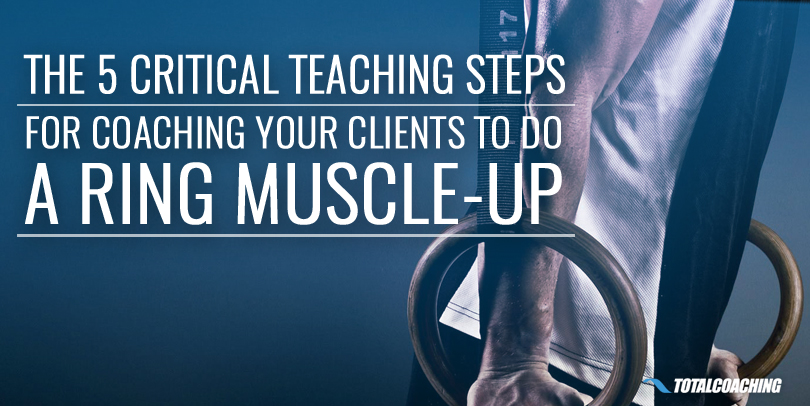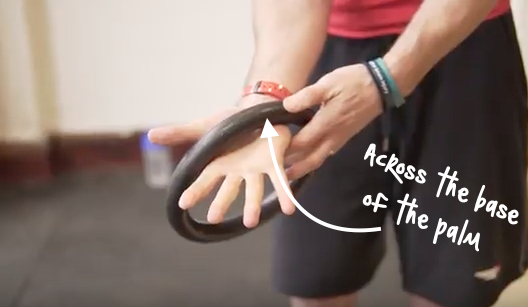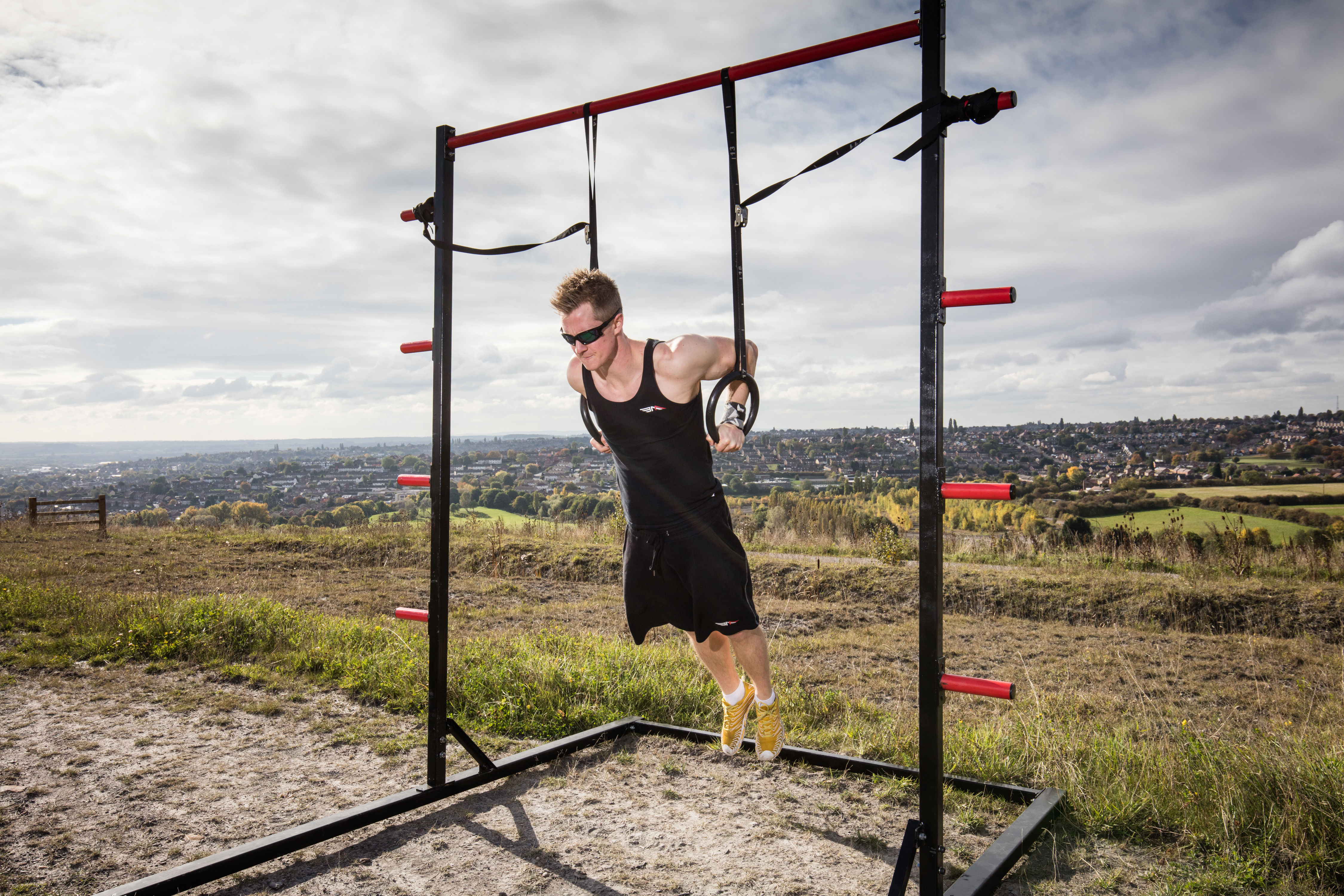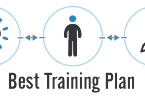If you’re looking to challenge your clients, help them work toward a goal, or just add some fun to your next workout session, then you’ll definitely want to consider teaching them how to do a ring muscle-up. It's one of those moves that provides such a sense of accomplishment and a desire to keep getting better.
Let’s explore the various phases the exercise entails, and most importantly, how you can teach your client to perform it safely.

The ring muscle-up is an iconic bodyweight movement that takes both skill and strength to master. It’s used in gymnastics, CrossFit, and Calisthenics. It’s a mark of good strength in both pulling and pushing movements as well as stability to control those rings!
It involves three phases: false grip pull-up, the transition between the rings, and pushing out from a deep ring dip. Don’t worry if you’ve tried it before and failed, or it feels impossible. I’ll give you all the tools you need to redefine your impossible!
Fundamental Steps
The movement starts with a pull-up, where you’re pulling your thumb down to touch your chest while maintaining a “false grip” on the rings (I’ll explain the false grip the ring in the next section).
Then you enter the “tricky” transition phase where you go from the top of the pull-up and move the chest forward between the rings into the down off a deep ring dip. This is a key element of the muscle-up that most people struggle with when starting out.
From there it’s having the strength and shoulder stability to push out of a deep ring dip. Then celebrate with a big smile!
False Grip
Your ring muscle-up starts with how you grip the rings.
Because the rings move (they aren’t stable) during the transition phase, rather than rotating your hand on the ring to transfer your body forward between the rings, you instead keep your hands fixed and rotate the wrist instead. This means you must place your hands on the rings because you want them to finish up at the end of the movement.
The end result is what we call a “false grip” where rather than the ring being held straight across the fingers, it goes diagonally across the hand, gripping still with the thumb, but down towards the base of the palm rather than on the fingers.

Having adequate range of motion at the wrist is a huge factor in being able to false grip the rings. You need to create a large amount of wrist flexion. Without that wrist flexion, you've got no false grip and the ring muscle-up will stay in the impossible box.
Using resistance bands to enhance a stretch on the forearms and help mobilize the wrist is a great way to improve your ring false grip (see video).
Instability of the Rings
The instability of the rings makes them a great progression in general training for things like dips. The fact that they are unstable and move means the demand on your shoulder stabilizers, for example, in a ring dip go through the roof when compared to bar dips.
It’s surprising how many people can “bosh out” three sets of ten bar dips, but as soon as they jump onto the rings, they can’t even hold themselves up without shaking around out of control.
Looking to change up your workouts? Why not incorporate our favourite gym ring exercises- https://t.co/IwCoZsgJEn #fitness #gym #workout pic.twitter.com/K0gpRPbxON
— Vesta Fitness (@Vestafitness) December 21, 2016
We shouldn’t be alarmed when this happens although we should be cautious and progressive with our use of the rings.
Giving your brain the chance to come to grips with the fine motor control of those shoulder stabilizers in a controlled environment is key. So getting up on the rings and just trying to balance is where you should start.
Once that’s comfortable you can start working on progressing to ring dips. This might start with just the eccentric or lowering portion and then jumping back up to the top before you’re eventually able to complete full reps.
The “Tricky” Transition
Getting from the top of your pull-up, while maintaining false grips, to the bottom of your deep ring dip is essentially what the transition is.
It requires you to go from the pull-up position where you’ve driven your elbows down to your sides and then getting your chest in between the rings, taking the shoulder into extension in the bottom of a ring dip.

The higher your false grip pull-up, and the deeper your ring dip position makes getting into and through the “tricky” transition easier. Like any new skill, the transition takes time to master and requires practice.
In the video above we have two exercises that allow you to practice the movement in a more controlled or assisted environment: one with your feet on the floor supporting your weight and the other with a band assisting you through the transition.
Using the assistance “tool” from the locker with the band assisted ring muscle-up is an excellent way to practice the most difficult phase of the ring muscle-up: the transition.
The band not only supports you but also gives you that little nudge as you pull up to get the head and chest forward and transitioned between the rings into the deep ring dip position.
Conclusion
We hope you found this tutorial helpful and would love to see your progress towards redefining your impossible of the ring muscle-up.
You can contact me for help, or you can send in your "graduation" videos showing me what you've taught your clients to do. Once you’ve helped your clients redefine their "impossible," their achievements will live forever on our graduates page of our website at www.schoolofcalisthenics.com.
And, if you are just getting started in calisthenics we have a FREE Beginners Guide to Calisthenics that we’d love to give you. Click here to join over 10,000 others getting started with our FREE eBook!




